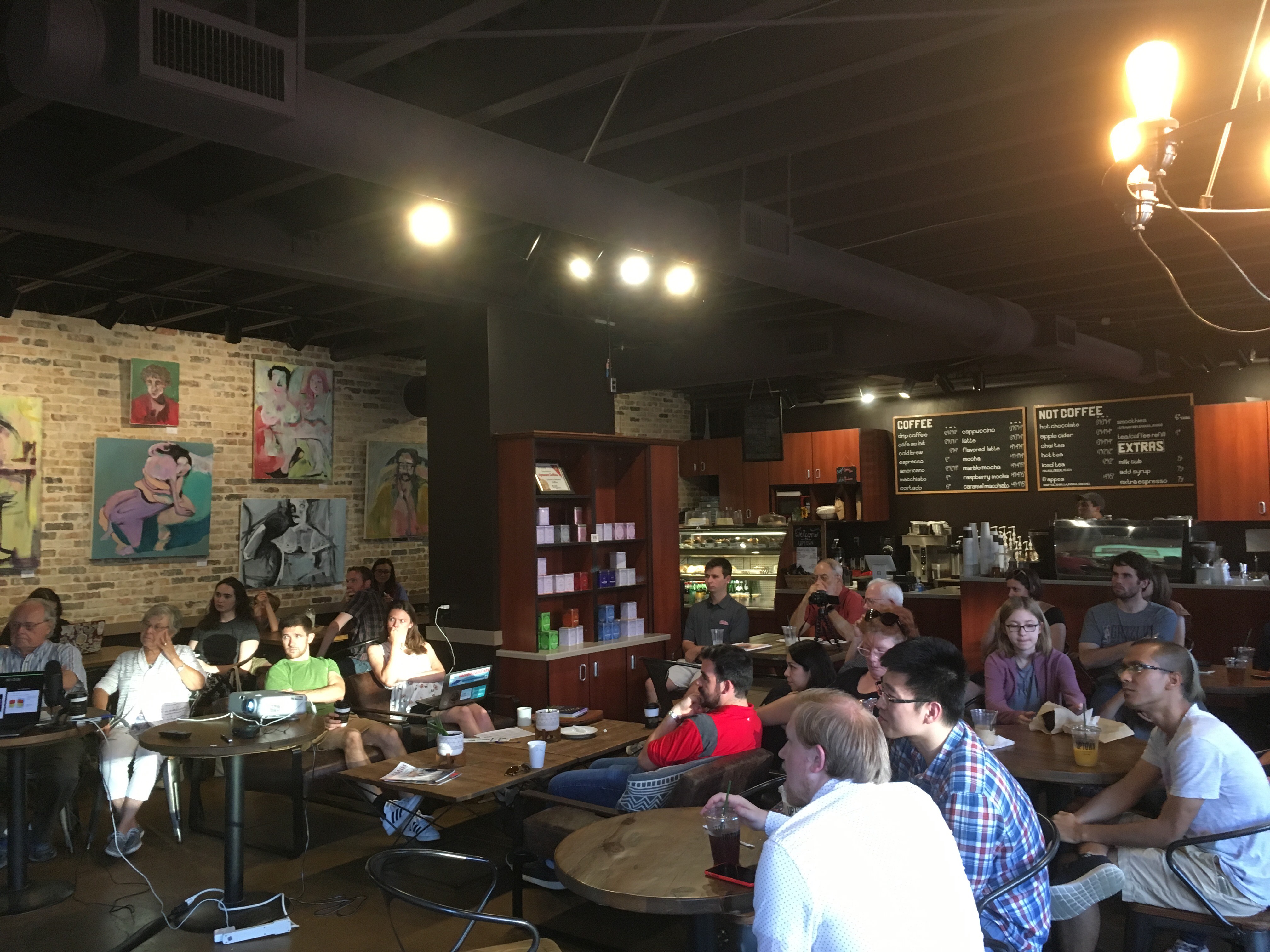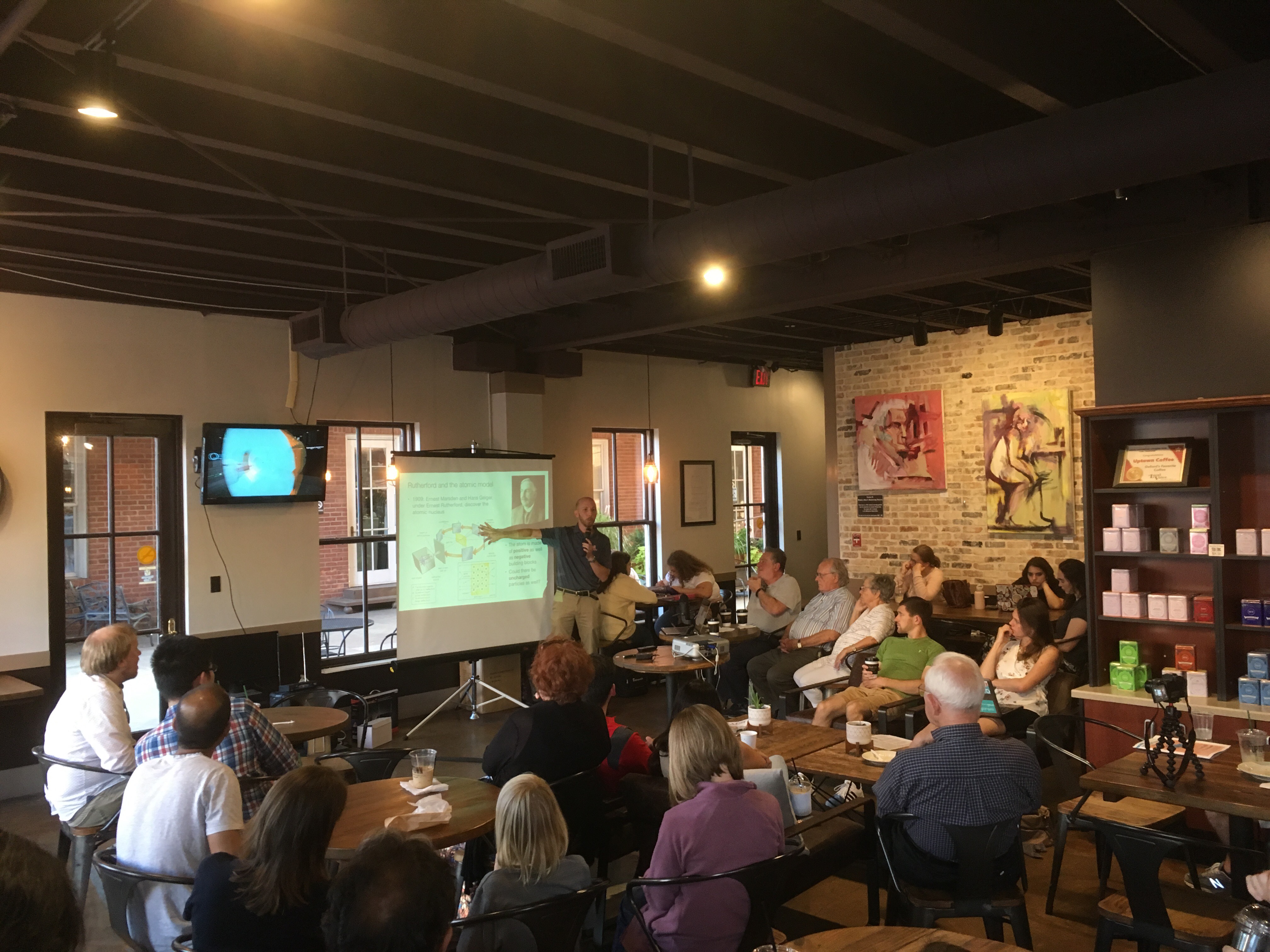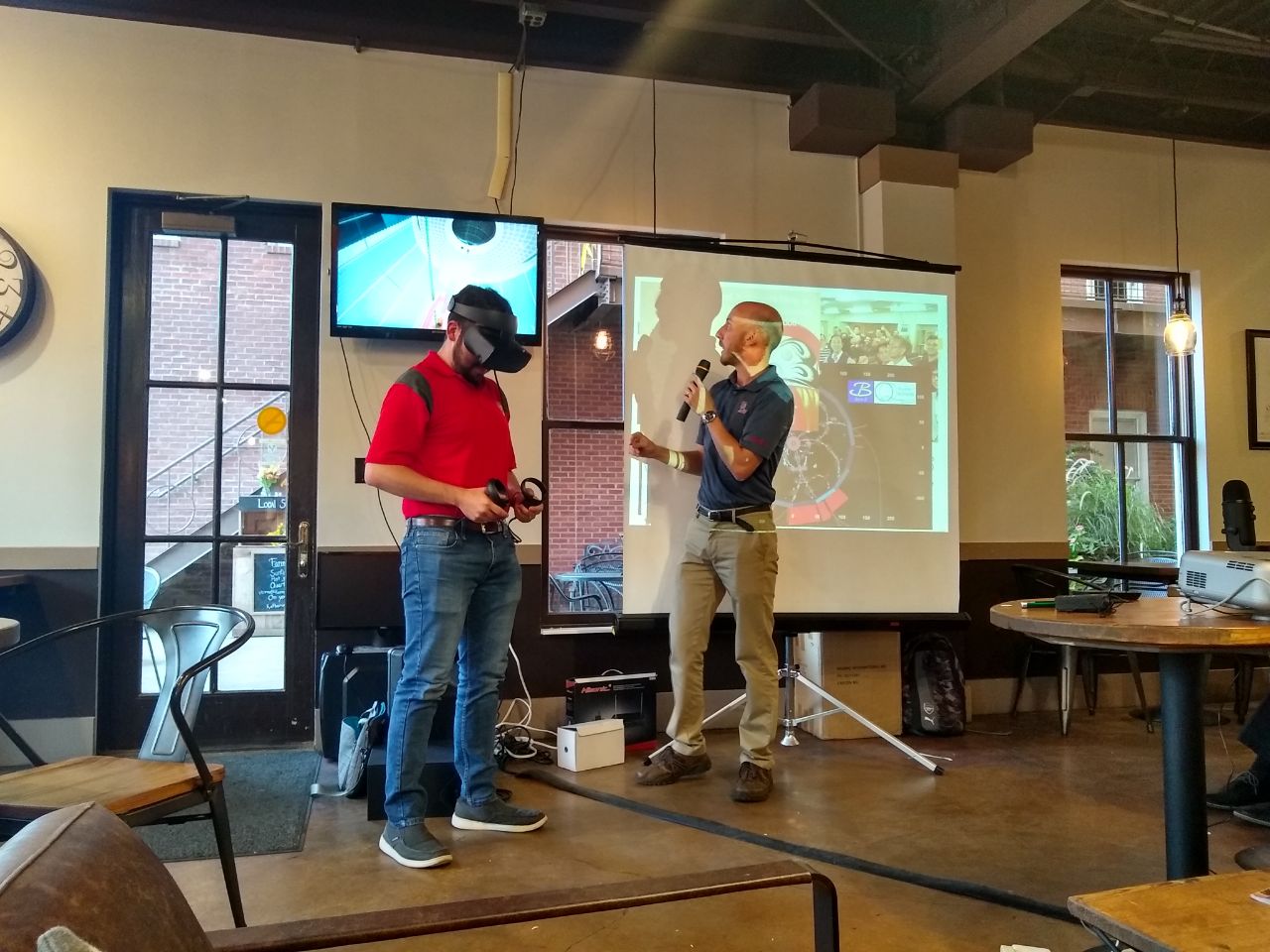November 2025
A Spoonful of Sugar for Medicine
Dr. Eden Tanne, Department of Chemistry and Biochemistry, University of Mississippi.
Nobody likes taking their medicine — especially if you're a cancer cell! What if we could coat the medicine in sugar? Triple-negative breast cancer, the most aggressive and lethal sub-type of breast cancer, is tough to treat because it lacks the three traditional “markers” that can be used to deliver treatments in other subtypes. However, these cancer cells overexpress glucose transporters on their surface to enable them to take up as much sugar as possible. Can we use this to develop a new strategy to treat triple negative breast cancers? Join Dr. Eden Tanner for a Science Cafe sharing some of her teamís latest work in developing targeted nanoparticle therapies using sugar-based ionic liquid surface coatings.
Tuesday, November 18, 2025, 6:00pm - 7:00pm
Heartbreak Coffee, 265 North Lamar Blvd, Oxford
And via Zoom
October 2025
Making Water Out of Rocks and Rocks Out of Water
Dr. Ryan Fortenberry, Department of Chemistry and Biochemistry, University of Mississippi.
Water can be produced from rocks as shown by experiments on lunar regolith simulant. We are able to explain the actual chemistry of such processes through quantum chemical techniques. Water forms from passing H2 gas over mineral-based molecular nanoclusters in the presence of sunlight. The production of water from rocky materials opens the prospect of water production for Lunar or Martian colonies as well as in regions of the Earth with little rainfall or drought. Additionally, the reverse of these processes also helps to explain how planets and rocky bodies likely formed in the early Universe. Hence, the processes that created the Earth may also help us to explore beyond it.
Tuesday, October 21, 2025, 6:00pm - 7:00pm
Heartbreak Coffee, 265 North Lamar Blvd, Oxford
And via Zoom
September 2025
Canopies and Containers: Exploring Bonsai Physiology and Creating Nature in Miniature
Dr. Zach Adamz, Department of Modern Languages, University of Mississippi, Komorebi Bonsai.
The living art of bonsai is at the nexus of aesthetic form and horticultural practice. Bonsai provides unique insight into plant physiology and highlights the tenacity of trees through processes that enable their miniaturization, including pruning, defoliation, and the containerized environment. Bonsai techniques leverage plant physiology —such as hormone distribution, stress responses, and energy distribution— to create long-lived miniature trees that maintain scaled structural and aesthetic characteristics of their full-sized counterparts. Join us as we explore how bonsai transforms horticultural understanding while creating living art.
Tuesday, September 16, 2025, 6:00pm - 7:00pm
Heartbreak Coffee, 265 North Lamar Blvd, Oxford
And via Zoom
April 2025
Who Owns the Moon?
Michelle L.D. Hanlon, Executive Director, Center for Air and Space Law, University of Mississippi School of Law, University of Mississippi.
Humanity is poised on a threshold unlike any other in its history. After millennia of being awed by the night sky and centuries of studying the patterns of stars and planets, the vast resources of space are within our grasp. As the commercial space industry grows in influence and importance, complex legal and ethical questions emerge about territory, resource rights, sustainability, equity, and the preservation of the space environment. Join us as we navigate the intricacies, gaps, and inconsistencies of space law and explore what boundaries exist on humans as we expand beyond our Earth and into the Universe.
Tuesday, April 15, 2025, 6:00pm - 7:00pm
Heartbreak Coffee, 265 North Lamar Blvd, Oxford
And via Zoom
Using Neuroscience to Understand American Political Attitudes and Decisions
Dr. Ingrid J. Haas, Department of Political Science, Center for Brain, Biology, and Behavior, University of Nebraska—Lincoln.
New research on American political behavior is using psychology and neuroscience to understand political attitudes and decisions. In this talk, I'll discuss what we can learn from psychology about how people support (or fail to support) democratic principles, and introduce neuroscience as a method to study political decision making.
Tuesday, April 8, 2025, 6:00pm - 7:00pm
Heartbreak Coffee, 265 North Lamar Blvd, Oxford
And via Zoom
March 2025
AI and Digital Transformation in Concrete Mix Design — The Future of Smart Materials
Dr. Ali Behnood, Department of Civil Engineering, University of Mississippi.
The integration of Artificial Intelligence (AI) and digital transformation in concrete mix design is revolutionizing the construction industry by enhancing efficiency, accuracy, and sustainability. AI-driven algorithms optimize material selection, mix proportions, and performance predictions, reducing waste, costs, and environmental impact. By leveraging machine learning models, real-time data analytics, and automation, smart concrete mix design enables adaptive, high-performance materials tailored to specific project needs.
Tuesday, March 18, 2025, 6:00pm - 7:00pm
Heartbreak Coffee, 265 North Lamar Blvd, Oxford
And via Zoom
February 2025
The Great Planetary Alignment of 2025
Purnima Narayan, Department of Physics and Astronomy, University of Mississippi.
The media has highlighted the upcoming planetary alignment in January and February 2025, but how rare is this event? And how practical is it to observe all the planets? (Spoiler: Some will be quite challenging to view.) This talk will explore the significance of this alignment, provide tips for viewing with the naked eye or binoculars. We will also demonstrate how to use a planetarium application and a solar system simulator to visualize the event from your location.
Tuesday, February 18, 2025, 6:00pm - 7:00pm
Heartbreak Coffee, 265 North Lamar Blvd, Oxford
And via Zoom
Previous Years
Sponsors
Department of Physics and Astronomy
Some of the material in this website is based upon work supported by the National Science Foundation under Grant No. PHY-1067985. Any opinions, findings and conclusions or recomendations expressed in this material are those of the author(s) and do not necessarily reflect the views of the National Science Foundation (NSF).Photos



